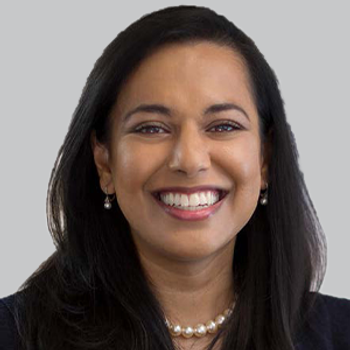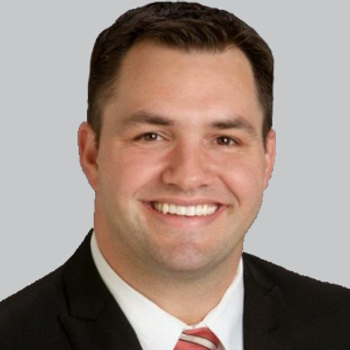
In PHOENIX, 664 participants with ALS will be randomly assigned 3:2 to either AMX0035 or placebo for 48-weeks, followed by an optional open-label extension that will continue to assess for efficacy and safety.

Marco Meglio, Assistant Managing Editor for NeurologyLive, has been with the team since October 2019. Follow him on Twitter @marcomeglio1 or email him at [email protected]

In PHOENIX, 664 participants with ALS will be randomly assigned 3:2 to either AMX0035 or placebo for 48-weeks, followed by an optional open-label extension that will continue to assess for efficacy and safety.

A single dose of ubrogepant at its highest FDA-approved strength of 60 mg once daily had no statistically significant effect on atogepant pharmacokinetics.

Treatment with deep brain stimulation resulted in improvements in mean motor scores, reductions levodopa equivalent dosage, and a decrease in neuropsychiatric features.

An exergaming program that spanned 8 weeks showed positive effects for patients with multiple sclerosis both with and without restless legs syndrome.

With a PDUFA date of October 26, 2023, the FDA will review data from the phase 2b VISION-DMD study, in which vamorolone met its primary end point in change in TTSTAND velocity.

Take a look at 5 of the most-anticipated clinical trial data readouts expected in 2023 that neurology health care professionals should keep their eyes on.

Donald Whiting, MD, chair of Allegheny Health Network’s Neurosciences Institute, provided insight on ADvance II, a multinational trial exploring the use of deep brain stimulation in patients with mild Alzheimer disease.

The executive direct of Cure CMD discussed the state of care for patients with congenital muscular dystrophies, the need for new treatments, and the patience with gene therapies.

Data from a cohort of more than 8000 participants suggest that older adults with less optimal sleep duration might benefit from moderate napping for their cognitive functions.

In addition to showing a tolerable safety profile, EQU-001 resulted in reduced IL-17 and IL-1b plasma levels relative to baseline and limited the ability of peripheral mononuclear cells to secrete additional pro-inflammatory cytokines.

After 12 weeks of treatment, almost twice as many patients on eptinezumab reported either “much improved” or “very much improved” than those on placebo, according to Patient Global Impression of Change.

Over a 2-year treatment period, no clear effects of dimethyl fumarate were identified on clinical or MRI outcomes in patients with progressive multiple sclerosis.

Richard Williamson, MD, FAANS, a neurosurgeon at Allegheny Health Network, provided commentary on the explosion of technology in neurosurgery and how exoscopes ease the process.

The new criteria, inclusive of both pediatric and adult patients, advocates for testing for MOG-IgG in appropriate populations, and cautions against testing patients with clinical and radiological features typical of multiple sclerosis.

Data showed that slightly more than half of the patients with NMOSD visited at least 2 neurologists before receiving full diagnosis, and less than 30% reported they were aware of at least 1 nearby specialized NMOSD center.

After a follow-up of nearly 4 years, nearly half of the patients (n = 10) with baseline classification of cognitive IADL impairment and mild cognitive impairment converted to dementia.

Going forward, the company must provide safety and steady-state pharmacokinetic data on the 200 mg dose of IKT-148009, as well as continued measurement of visual acuity and examination of the cornea and lens.

In the combined double-blind and open-label extension periods, plasma neurofilament light levels were lower in those on teriflunomide and were prognostic of relapse or MRI activity.

Mesdopetam showed significant effects on the secondary end point of Unified Dyskinesia Rating Scale, an assessment of involuntary movements associated with long-term treatment with dopaminergic medication.

The director of Neuroinnovation and Multiple Sclerosis & Neuroimmunology Imaging Program at UT Southwestern Medical Center provided insight on the promising future of treating radiologically isolated syndrome at its earliest stages.

The phase 3 KINECT-HD study, which showed statistically significant differences from placebo in Total Maximal Chorea score, served as one of the main parts to valbenazine’s supplemental new drug application.

KM-819, a potent inhibitor of FAF1, a key regulatory protein in cell death pathways, is currently being assessed in a 2-part trial, with results expected to help guide a future 24-month study.

Parents who had a child with multiple sclerosis and had either low socioeconomic position or family health condition were at particularly high risk for low health-related quality of life.

Similar to results at 24-months, findings showed improvements in patient outcomes with the SCS System including quality of life, functional ability, mood, and sleep.

The trial’s 2-stage design seeks to answer questions about the dosing and efficacy of brivaracetam, a previously approved agent for partial-onset seizures in patients with childhood absence epilepsy and juvenile absence epilepsy.

After a 12-month period, patients were able to use the implant for routine digital activities, such as texting, emailing, personal finance, online shopping, and communication of care needs.

Nearly 94% of nusinersen doses recorded in electronic health records database and more than 80% of doses recorded in the claims databases were received on time according to the recommended dosing schedule.

In the letter, the FDA specifically required that Eli Lilly provide data from at least 100 patients who received a minimum of 12 months of continuous treatment with donanemab.

The study provided class II evidence that CYP2C19 loss of function carriers with minor stroke or transient ischemic attack at low risk, but not high risk, of recurrent stroke received greater benefit from ticagrelor and aspirin rather than clopidogrel and aspirin.

Between sexes, females with cluster headache reported longer bouts than male participants and used prophylactic treatment more often, as well as higher rates of diurnal rhythmicity.